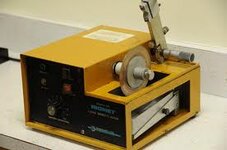Carl Fisher
Member
So I've been fighting with this for a while and figured I'd put this in the new forum 
For partial cut segmenting where you have to match a kerf width exactly, how are you thickness sanding the inserted piece? A cut piece has too many imperfections from the saw blade that exposes gaps in the segment and sanding by hand leaves you with the possibility of an irregularly shaped service.
I've also tried the sanding drum on the drill press route and find that to be worse than hand sanding
For wood, I could build a shooting board of sorts and use hand planes to do the job, but that won't work for acrylics.
So what's your method short of paying through the nose for a drum sander?
For partial cut segmenting where you have to match a kerf width exactly, how are you thickness sanding the inserted piece? A cut piece has too many imperfections from the saw blade that exposes gaps in the segment and sanding by hand leaves you with the possibility of an irregularly shaped service.
I've also tried the sanding drum on the drill press route and find that to be worse than hand sanding
For wood, I could build a shooting board of sorts and use hand planes to do the job, but that won't work for acrylics.
So what's your method short of paying through the nose for a drum sander?

